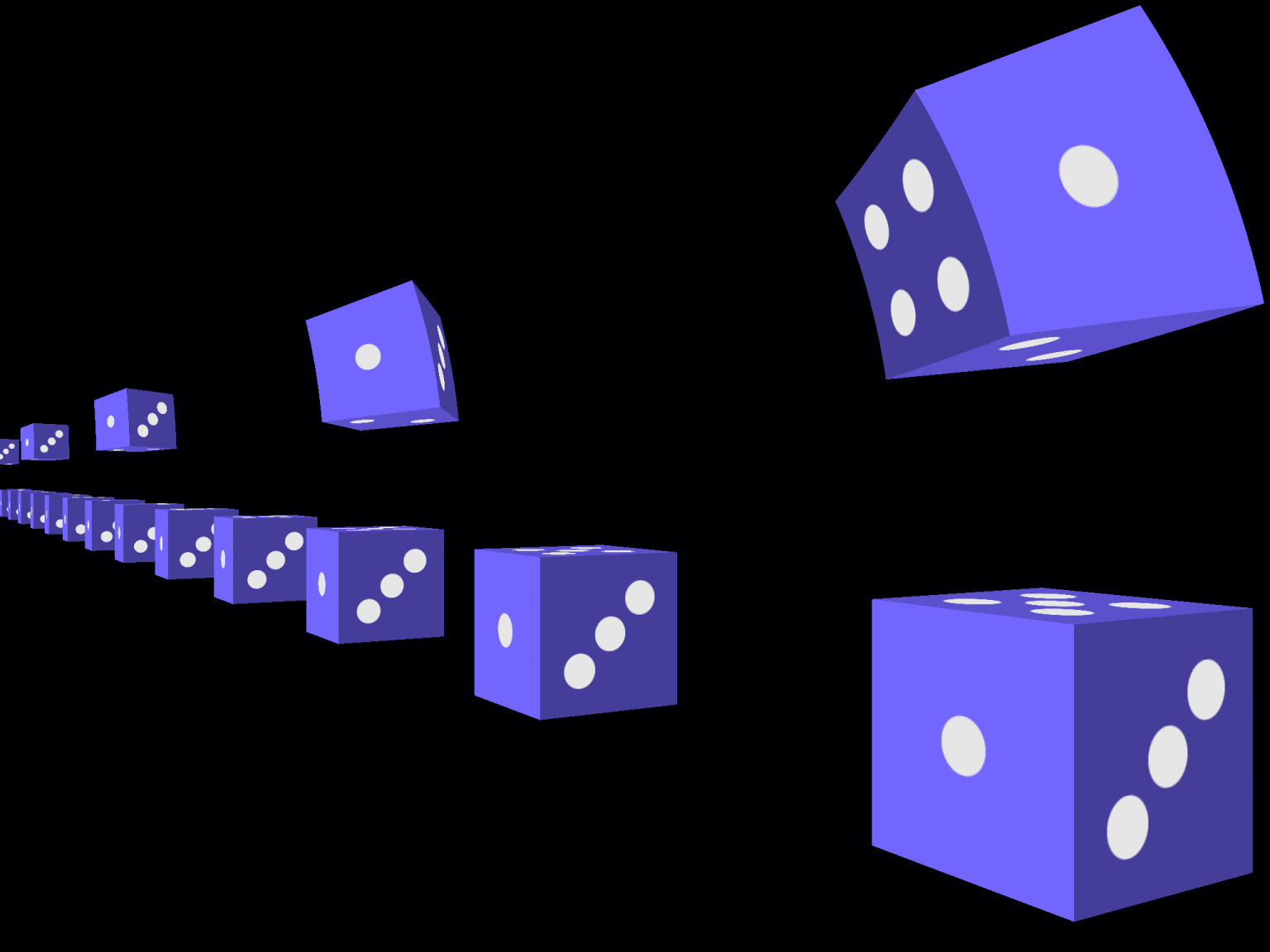3H project topic: A Relativistic Perspective
Description
What does the world actually look like if one is travelling
close to the speed of light?
There are several weird effects. For example, below is a
picture of some dice in a row.
The bottom row is stationary, the row above is identical but
moving towards us at
90% of the speed of light. They're not physically rotating,
yet you can see that effectively we
can actually see behind the cube.

Lorentz contraction means things get squashed but would we
actually see this effect?
Surprisingly spheres will appear as spheres, they are not
flattened as you might
expect from Lorentz contraction. The reason for this is that
an observer does not
"see" her reference frame, but rather the photons reaching her
eyes, and the photons
from the back of the sphere, having further to travel, left
slightly earlier than from
the front, counteracting the effects of the Lorentz
contraction. (see here
).
There are several relativistic flight simulators and
animations on the web, for example:
or look here
for more info.
There are several strange effects, collectively called relativistic beaming:
- Aberration: the scene is concentrated ahead, expanded behind; you can see things when looking forward that are in fact behind you
- Colour shifts: the scene is blue-shifted ahead, red-shifted behind;
- Brightness changes: the scene is brightened ahead, dimmed behind;
- Time changes: the scene is speeded up ahead, slowed down behind.
Mathematically, the fact that spheres appear as spheres
property is related to the concept
of conformal (or more precisely Moebius) transformations (see
here
and refs therein.)
The conformal group has many applications throughout physics
and mathematics.
For example, insights along these lines led Penrose directly
to the concept of twistors, useful tools in physics.
In this project we will explore what a relativistic observer
actually sees and the mathematics behind this with options to create your own pictures and animations.
Prerequisites
Special Relativity & Electromagnetism II (MATH2657)
Resources and references
Search the web, including the links above, there is lots out there. Some more links on the relativistic stuff...
- http://en.wikipedia.org/wiki/Lorentz_group
- http://math.ucr.edu/home/baez/physics/Relativity/SR/penrose.html and refs therein
- http://en.wikipedia.org/wiki/Mobius_transformation
- Physics
world article
- Real-world relativity: Image-based special relativistic visualization
- More
detailed thesis on which previous was based
- The
apparent shape of a relativistically moving sphere Penrose
paper
- Invisibility of the Lorentz contraction original paper by Terrell
- Apparent Shape of Large Objects at Relativistc Speeds Original paper by Boas
- Two-dimensional appearance of a relativistic Cube paper by Hickey